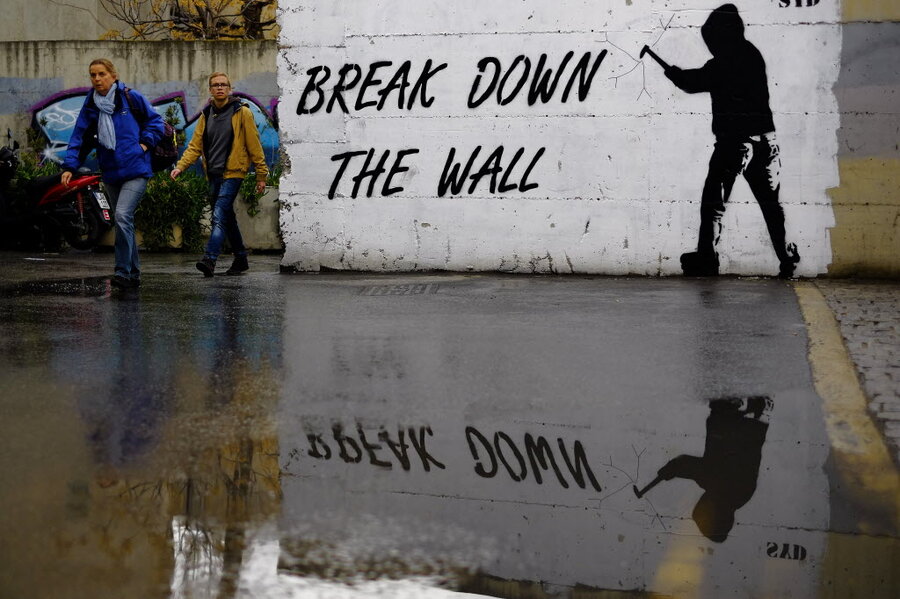Another model of Christian-Muslim harmony?
Loading...
In Iraq and Syria, minority Christians are still on the run from Islamic State. Yet in the rest of the region, the tragedy has triggered an unusual competition of ecumenical goodwill. Religious leaders in Jordan, Egypt, and Lebanon have recently proclaimed their societies are models of coexistence between Muslims and Christians. Outside the Middle East, Malaysia and Indonesia have also hailed their interfaith social harmony.
Now another place may soon be added to the chorus – Cyprus – and perhaps help in drowning out Islamic State’s assertion of a right to dominance in the holy land.
If negotiations aimed at reuniting Cyprus can conclude this spring, as seems more possible than ever, the divided Mediterranean island can also claim to be a model of Muslim-Christian reconciliation.
Since 1974, Cyprus has been split between ethnic Turks in the north and ethnic Greeks in the south, a result of Greece’s then-junta trying to take the entire island. Turkey still keeps thousands of troops on the Turkish side. Trust between the two communities has improved, a result of international efforts, but remains low. They have lived apart for decades. And both sides have claims to settle against each other.
Yet attitudes toward reunification have shifted. Greece and Turkey are now closer, a result of their own politics and pressure from Europe. The Cyprus economy, still reeling from a financial crisis in 2013, would benefit greatly if trade and people were to flow across the island. Recent discoveries of offshore petroleum have helped push the talks along.
But perhaps most of all, the two leaders on either side, Nicos Anastasiades of the Greek Cypriots and Mustafa Akinci of the Turkish Cypriots, have formed a close relationship. They are nearing an agreement that would create a single state, one with decentralized power.
One of the world’s most frozen conflicts is now thawing. And with so much violence in the region, a reconciled Cyprus has the potential to set a new tone. More countries might begin to compete on which one is a model of coexistence.





